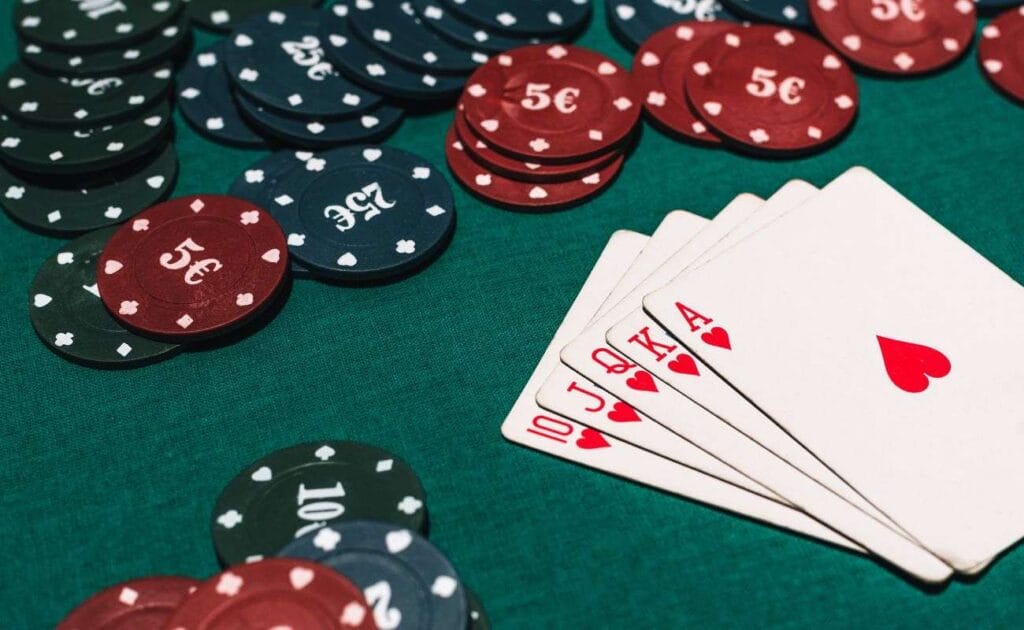
Sick of playing the same old online poker tournaments and cash games? Want to inject a bit more variety into your home games? Why not consider giving Irish poker a try?
Discover the basic rules in this article, including hand rankings and how to deal a round of Irish poker. You’ll also learn a few simple strategies and tips to get an edge on the other players.
What Is Irish Poker?
One of the most unusual and unique forms of poker, Irish combines elements from several other games. To begin with, it looks like a regular round of Omaha. However, as you’re about to find out, players must later discard some of their starting hand, similar to Pineapple.
How Popular Is Irish Poker?
In terms of popularity, it’s obviously nowhere near as common as a game like Texas Hold’em or even Omaha. If you regularly play poker online, you’ll already be aware that very few sites spread Irish games.
However, it’s often played in home games due to its fun nature. You’ll sometimes find it appearing in dealer’s choice games at live card rooms, too. You’re just as likely to see people enjoying Irish as playing Five-Card Draw or other old-fashioned game forms.
Irish Poker Rules

The initial setup is exactly as you’d see in a standard Omaha game. A regular 52-card deck is shuffled, with four cards initially dealt to each player. A dealer button and two blinds are also used. Just like Omaha and Texas Hold’em, the smaller of the two forced bets is usually fixed at half the size of the big blind.
Once the blinds are posted and the cards distributed, players can look at all four of their own cards. At this point, they must decide whether to fold, call, or raise, exactly like Hold’em or Omaha games.
After the initial betting round is wrapped up, the dealer reveals the first three community cards, known as the “flop.” Starting from the player to the immediate left of the dealer button, everyone now has the option to check or bet. Should anyone opt to place a wager, subsequent players may raise or fold.
Discards
So far, Irish poker may seem a lot like the traditional favorites Omaha and Hold’em. However, there’s a twist after the postflop betting round draws to a close. In a game of Irish poker, anyone left in the hand at this stage must discard two of the four cards in their hand.
That’s right — you started with a four-card hand, but you’ll take the turn and river with just two of these left.
Once everyone has discarded, the dealer reveals the turn card, and the rest of the hand unfolds exactly like a classic Hold’em game.
Hand Rankings
Hands are ranked the same way as any traditional form of poker (so not like short deck or casino poker dice). Just to be clear, here’s the hand ranking chart for Irish poker in full:
- Straight flush.
- Four of a kind.
- Full house.
- Flush.
- Straight.
- Three of a kind.
- Two pairs.
- One pair.
- High card.
Unlike Omaha, there are no restrictions on how to form your Irish poker hand. It’s precisely like Hold’em, in that you can use both of your remaining cards, just one, or none at all, simply playing the board.
Betting Structure
Irish poker is almost exclusively played as a big bet game, so you’re unlikely to find a fixed-limit setup. It’s most often played using a no-limit structure, but you might find pot-limit Irish games from time to time.
Basic Strategy Tips

Whether you’re playing a home game or are lucky enough to find Irish poker games online, you’ll want to do everything possible to gain an edge. Check out the following strategy tips to help you start winning at Irish.
Try To Maximize Your Options
At the beginning of a hand, take a similar approach to Omaha in that you need to maximize your options. For instance, holding four spades — the ace, king, queen, and jack — is bad news.
It might look pretty at first glance, but you already know you’ll have to throw two away after the flop. That means your flush outs are immediately cut from nine to just seven, while you also lose two outs to your Broadway straight.
Irish Isn’t Omaha
It’s certainly correct to try and keep your options open, as you would in Omaha. But the two games aren’t identical, so neither are the correct playing strategies.
For example, some of the most powerful drawing hands in Omaha simply don’t play as well in Irish. You might have a monster wrap draw on the flop, but remember that you’ll be tossing two of these away on the next street.
You Need at Least a Solid Hold’em Hand
You shouldn’t take a flop without at least a solid two-card Hold’em hand. A suited ace-king or a premium pocket pair will be good enough to continue even without other options to support them. But if you’re not even looking at a decent two-card hand, save your chips and fold.
Suited Connectors
These play just as well as in Hold’em. You can try to get in cheaply and look to hit flush and straight draws. However, like in Omaha, you’d much prefer to see double-suited hands than rely on just one draw. With so many extra cards in play, your opponents are far more likely to be sitting on big draws of their own.
Relative Hand Strength
Irish is more like Omaha than Hold’em in terms of relative hand strength. With the latter, it’s not uncommon for one pair to take a pot down. But that’s simply not going to happen in Omaha or Irish due to the additional permutations created by the extra hole cards.
A minimum of two pairs on the flop is needed for your Irish hand to be considered strong. When drawing, it should ideally be to the nuts, or at least the second nuts.
No Drinking Games
Finally, a bit of a fun tip — don’t confuse Irish poker with the well-known drinking game of the same name. If you do that, you’ll need to bring Jameson and Guinness to the table rather than poker chips and dealer buttons.
Get the Luck of the Irish at Borgata Online
Hopefully, this guide to Irish poker has opened your eyes to one of the more interesting forms of the game. If reading it has put you in the mood to try something new, register at Borgata Online. There, you’ll find all kinds of exciting online poker variations available in tournament and cash game formats.
